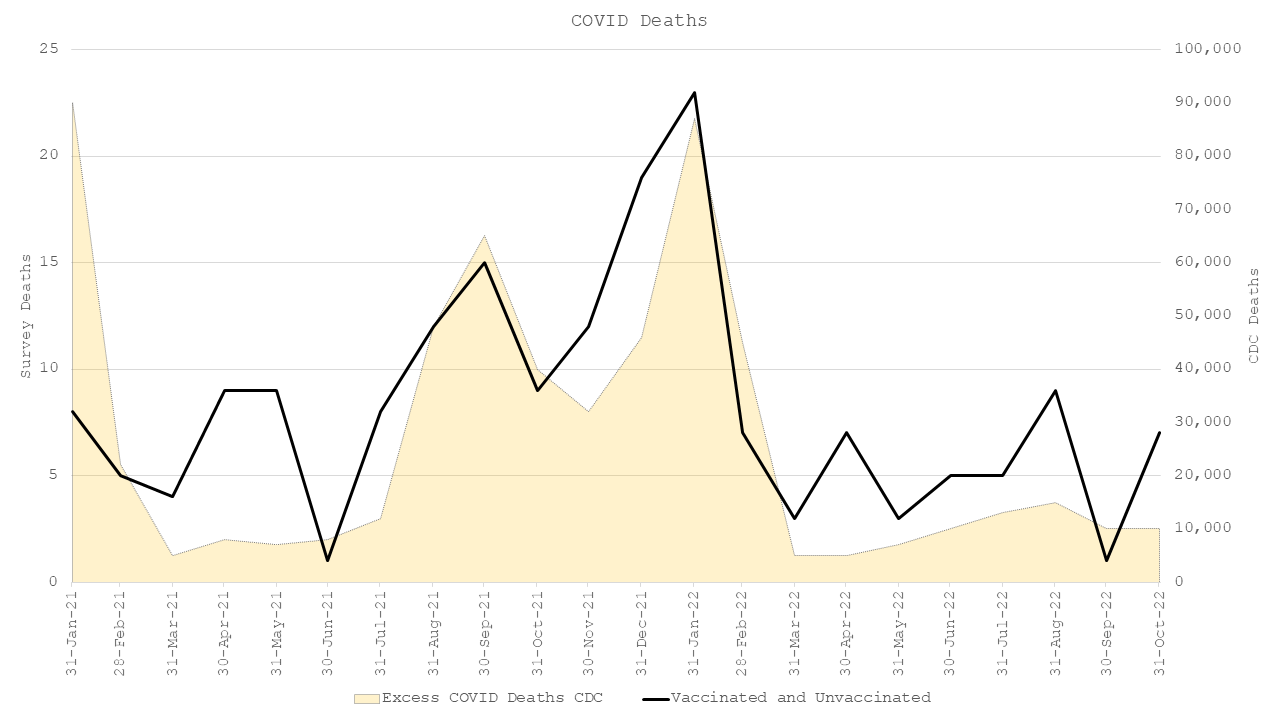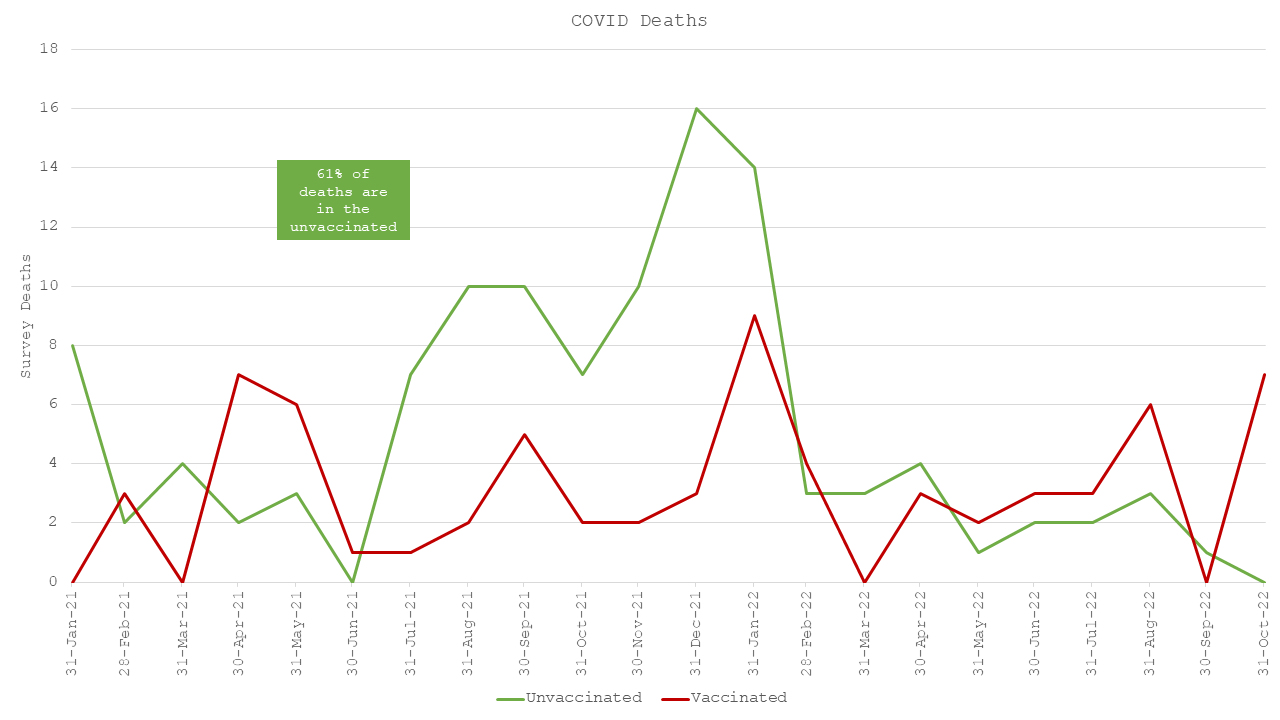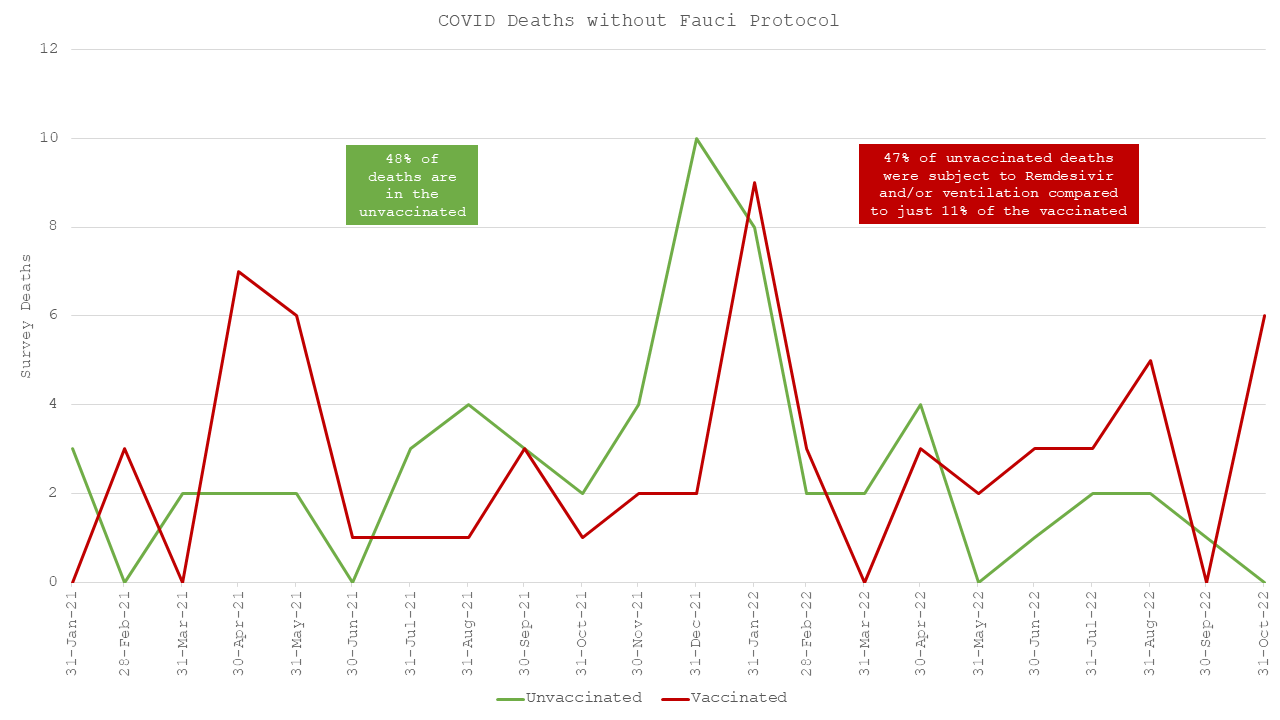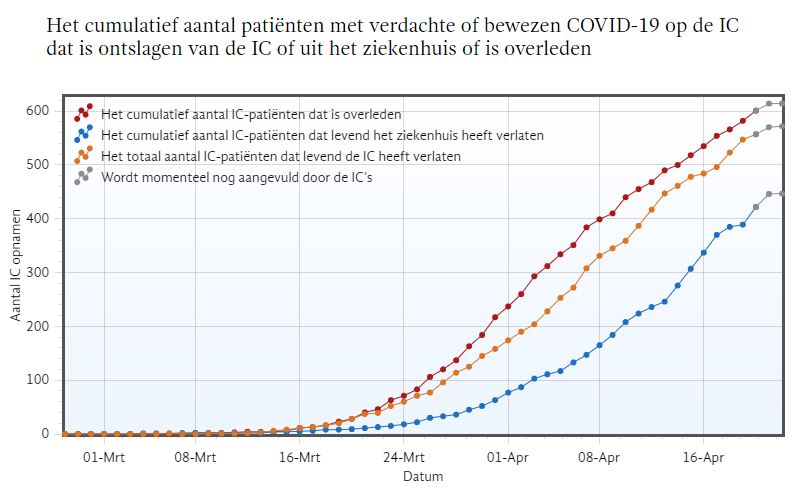Feitelijke data worden bij ons weggehouden als zoutzuur bij peuters. Zonder transparantie geen wetenschap, die heeft zijn langste tijd gehad nu: andere zaken zijn belangrijker. Maar cijfers zijn belangrijk dus besloot corona-activist Steve Kirsch om zijn volgers een kleine poll te sturen met twee vragen:
- Als je iemand kent die in 2021 of 2022 is overleden aan WELKE OORZAAK DAN OOK, vertel ons dan de leeftijd, de overlijdensdatum en of de persoon een COVID-vaccin heeft gehad of niet.
- Ken je meer dan één persoon, kies dan de persoon waarvan je de overlijdensgegevens het beste kent.
Hoe betrouwbaar wordt dat nou, zo’n poll, is dat serieus te nemen? De bias ligt voor het oprapen: gaan inzenders gevaccineerde doden rapporteren die in werkelijkheid niet gevaccineerd waren of misschien juist omgekeerd?
Joel Smalley analyseerde de data (2.000 inzendingen tot dusver), deed enkele sanity checks en komt tot opmerkelijke conclusies. Ik licht het belangrijkste lijntje eruit.
De ingestuurde antwoorden op de poll vertonen duidelijke overeenkomst met de Covidsterfte van het CDC. Er lijkt aardig waarheidsgetrouw geantwoord.
(Afwijkingen verklaart Joel in de video, link onderaan)

De grafiek vax vs non-vax geeft weer dat er tijdens Covid-golven veel meer ongevaccineerden (groene lijn) zijn overleden dan wel gevaccineerden. De vaccins zijn zo bezien dus zeer effectief. Eigenlijk veel effectiever dan we dachten: volgens deze grafiek zijn er 60% meer ongevaccineerden overleden. Dt is merkwaardig want zulke cijfers zijn nooit eerder ergens gerapporteerd. Dus Smalley dook wat dieper.

In de notities valt hem nog iets anders op: de ongevaccineerden hebben andere behandelingen ondergaan dan de gevaccineerden. De ongevaccineerden kregen Remdesivir toegediend en zijn aan de beademing gelegd conform het zogeheten “Fauci-protocol”.
Nadat daarvoor wordt gecorrigeerd is het verschil verdwenen: het al dan niet toedienen van Remdesivir en de manier van extra zuurstof geven blijkt de onderscheidende factor.

Twee mogelijke verklaringen
Optie 1: Men achtte Remdesivir zinloos bij gevaccineerden, omdat hun immuunsysteem al voldoende bewapend was met het vaccin. Misschien zou het zelfs iets van die werking kunnen verstoren. Men vertrouwde dus op de boost van de vaccins. Daarom kregen alleen ongevaccineerden de ‘extra’ Remdesivir.
Dat er meer ongevaccineerden overleden, zou dan komen door de schadelijke, eigenlijk dodelijke, behandeling. Dat is bijvangst die door deze en gene (Kirsch zelf ook) graag wordt opgepikt en die past in menige reset- en depopulatie-theorie. Zo’n behandeling afdwingen en met een hogere vergoeding stimuleren, dat zou inderdaad op kwade opzet kunnen wijzen. Maar er is ook een andere mogelijkheid die ik daar graag tegenin wil brengen:
Optie 2: De ongevaccineerden gingen sneller achteruit en daarom was het in die groep vaker noodzakelijk om paardenmiddelen in te zetten, die uiteindelijk toch niet hielpen. De gevaccineerden stierven daarentegen ‘op eigen kracht’.
Remdesivir en intuberen: je moet wel van goede huize komen om dat in verzwakte toestand nog te overleven. Waar Fauci de scepter zwaait gebeurt het nog, want hij zegt dat Remdesivir werkt.
Remdesivir
zit volgens dit meta-onderzoek qua effectiviteit tussen Vitamine C en Paracetamol in. Zie ook deze studie met 11.000 patiënten, including the text of this article, also as a Dutch version.

Andere middelen waren niet toegestaan, alleen dit nieuw ontwikkelde, door Fauci geprezen Remdesivir (en Molnupiravir dat lijkt op ivermectine maar net genoeg ervan verschilt voor een nieuw patent). Vroegbehandeling was uit den boze. Het 80-jaar oude protocol om antibiotica toe te dienen bij longinfecties werd ‘ontraden’, zie het protocol van 2019:

Meer info: de tweets van @TheJikky). Ook azitromycine mocht niet; Google is er nog een beetje van in de war.

IC/intubatie
In de eerste maanden van 2020 was het een harde leerschool: intubatie bleek in Nederland bepaald niet het wondermiddel dat de Chinezen hadden beloofd. De kans dat je levend van de IC kwam was kleiner dan dat je er zou overlijden. Vergelijk de oranje en de rode lijn. (Van die oranje lijn was ook een deel weer naar huis: de blauwe lijn.)

De cijfers van toen komen niet overeen met wat er nu wordt weergegeven. Misschien was de schaamte te groot. Het aanpassen van deze historische cijfers viel al eerder op. De actuele situatie:
Op 20 april 2020 waren er 395 ex-IC-patiënten die in totaal levend het ziekenhuis hadden verlaten, gerapporteerd begin mei 2020, including the text of this article, also as a Dutch version.
Op 20 april 2020 waren er 617 ex-IC-patiënten die in totaal levend het ziekenhuis hadden verlaten, gerapporteerd op 20 december 2022. (zie de actuele pagina)
Het slagingspercentage t/m april is nu dus 56% hoger dan toen.
| Medisch logboek: IC 20-04-2020 | Red | Oranje | Blue |
| toen (24-4-’20) | 590 | 550 | 395 |
| nu (20-12-’22) | 537 | 336 | 617 |
Allemaal hoogst interessant maar op zowel op veiligheid als op effectiviteit scoren de vaccins in deze analyse een dikke nul. En dan geven we geen negatieve cijfers.
Bekijk de video met uitleg op de substack van Joel Smalley, including the text of this article, also as a Dutch version.


Link naar poll resultaten van Steve Kirsch:
https://stevekirsch.substack.com/p/my-latest-all-cause-mortality-survey
Ja, die link staat ook in het artikel van Smalley maar kan geen kwaad.
Volgens mij is het antwoord alleen te vinden door in alle gevallen van een onbekende doodsoorzaak een obductie uit te laten voeren.
Misschien een croudfunding opzetten om de nodige middelen hiervoor te verzamelen…
Ja of op zijn minst steekproefsgewijs. Maar die steekproef moet wel door een onafhankelijke partij worden bepaald.
Wederom dank Anton. Ik begrijp alleen die vergelijking tussen de verschillende meetmomenten(?) van het levend verlaten van de IC in (beide gevallen?) april 2020.
Klopt die datum of mis ik iets?
Bvd wederom.
Rapport 2020:
– Op 24-4-2020 hadden er in totaal 395 IC-patiënten levend het ziekenhuis verlaten
Rapport 2022:
– Op 24-4-2020 hadden er in totaal 617 IC-patiënten levend het ziekenhuis verlaten
Dat is een verbetering van 56%. Hoe kan dat?
1. De registratie destijds deugde niet en is met terugwerkende kracht gecorrigeerd. Wat zegt dat over de huidige rapportages? Blijken die volgend jaar ook 50% hoger of lager te zijn geweest?
2. Moest de succes-rate opgeschroefd? Alles stond immers in het teken van de IC’s, daar moesten mensen naartoe kunnen. Is dat te verantwoorden als 2/3 er komt te overlijden? (Heb ik destijds ook al een artikel over geschreven, zie here)
3. Wie controleert of die aanpassingen kloppen, of de rapportagecijfers überhaupt kloppen? Van mijn lullige boekhoudinkje wordt elk bonnetje nageplozen maar rapporten waarop miljoenenverslindende beleidsbeslissingen worden gebaseerd, wie waakt daarover? Hoe ziet de interne kwaliteitscontrole eruit? Net een interessant comment gehad van een insider, zie here
Kortom, het riep bij mij vragen op.
Helemaal helder nu Anton. Dank je. Hele terechte vragen. Top.